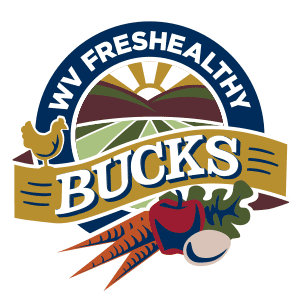How to start a SNAP program
at your Farmers Market
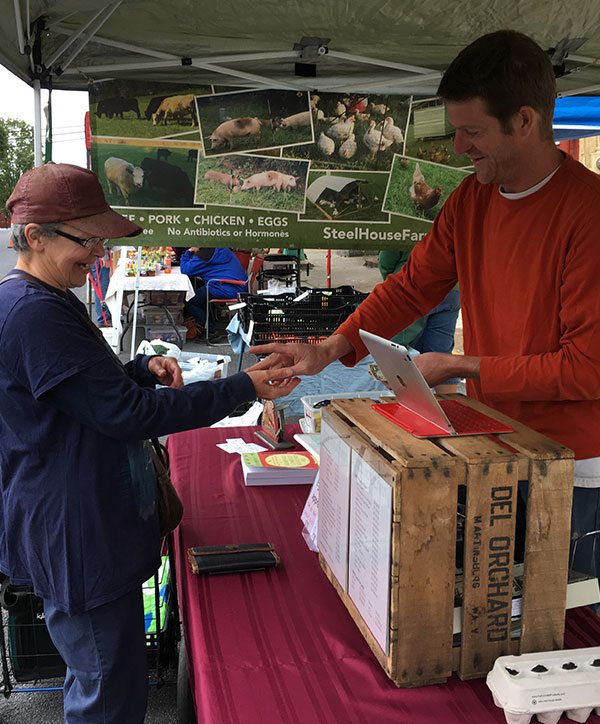
Accepting SNAP (Supplemental Nutrition Assistance Program) at your market is a win-win situation.
Since 2014, WV FresHealthy Bucks has been partnering with local farmers markets and community organizations to improve the health of our neighbors by encouraging supplemental nutrition assistance program recipients (SNAP) to shop at local Farmer’s Markets.
We want to help you do the same!
Starting and running your program

Apply
First things first…
You’re gonna need an FNS number and some EBT equipment.

Funny Money
You’re gonna need something for folks to spend with vendors
You may even want to sweeten the deal for your customers and vendors!

Market Day
You’ve got equipment and bucks …
Let’s get folks shopping!

Balance the books
Now you that you have customers, you’re gonna need to crunch those numbers
Starting a SNAP program at your market can make a big differece.
Why is Snap so important for your WV Community?
By 2030 almost half of the US population will be obese if current trends continue.
Currently, WV has an obesity rate of 37% and known diabetes incidence at 18
Bottom lines and Waist lines
Over 4o million eligible Americans spend more than $60 billion in SNAP annually, plus another $60 billion of their own money on groceries.
That is over $120 billion annually! Unfortunately, that money is often spent on the cheapest food choices which are often also the unhealthiest.
It is no wonder the nation spends over $1 trillion on diet-related illnesses each year!
Standard American Diet (SAD)
Unfortunately, we have yet to find a single nutrient as the culprit.
Rather it is the entire way of eating – processed oils, refined grains, and sweetened beverages with a void of food that is natural, fresh, and locally sourced.
Societies eating a wide variety of traditional and fresh food rarely get Western metabolic diseases.
Healthy food is treatment – people who get off the SAD improve their mental and physical health.
The Full Belly Paradox
Lots of calories, but little to no nutriition!
What's better for the body is also better for the planet.
The latest Food Guidelines for America mention, for the first time, that we should pay more attention to the environmental footprint of our food consumption.
Sustainability for the planet and the local farm economy means that folks should be able to shop locally for produce when available.
A tomato shipped from 1000’s of miles away is not the same as one grown in your county.
Empty Packages
- 80% of food comes from a package or is pre-prepared.
- Less than 20% of their total diet is freshly prepared or cooked.
Step 1: FNS Number and EBT Machines
Let’s get you started on the right path!
Getting started takes time. It can take 4 months to get your FNS number and equipment. You need both of those before you can start accepting SNAP at your market … so let’s get you going

First: Apply for an FNS (Food and Nutrition Service) number.
1) Sign up for a USDA account by CLICKING HERE.
You will need a valid email address for this process.
2) After you activate your account through email, CLICK HERE to apply for your FNS number.
WOOOOHOOOO!!! You’re doing great!
Some paperwork is needed to process the application.
Instructions on what documents are needed and how to submit will be provided at the end of the application. In most cases the following information/documentation will be needed:
- For nonprofit organizations, a copy of your IRS Determination Letter noting 501C3 status may be required.
- Government-owned markets MUST submit a letter, on letterhead, proving the government entity owns or sponsors the market.
- Responsible official(s) (i.e. market owners, partners, board members, etc.) must provide copies of a photo I.D. and Social Security card.
- A copy of your business license may also be required.
Next: Now that you have your FNS number, you need some EBT (Electronic Benefits Transfer) equipment!
There are currently two primary options available to help markets and farmers obtain equipment to process SNAP transactions:
1. FNS EBT Equipment Program
This program offers low-cost, wireless EBT point-of-sale (POS) equipment to eligible markets and farmers who:
- Have not previously received EBT equipment through this program, and
- Do not currently possess functioning SNAP EBT equipment, or
- Currently, possess functioning SNAP EBT equipment, but received the equipment before May 2, 2012, and
- In the case of a Direct Market Farmer, participate in at least one
farmers market.
The program pays for the equipment and service fees for up to 3 years, including set-up costs, monthly statement fees, and wireless plan fees.
The market or farm is responsible for payment transaction costs and any fees to terminate an existing contract.
The application can be found HERE
2. State Equipment Programs
States are required to make no-cost, EBT-only POS equipment available to retailers such as farmers markets and direct market farmers.
Please check with your State SNAP Contact to determine if this option may work for your market or farm.
If your market is located in WV, you can find out more about the state-sponsored EBT program by calling 304-558-4126 or via email at dhhrwvebt@wv.gov
If you are in another state, CLICK HERE to find out who to contact.

Step 2: SNAP tokens and Incentives
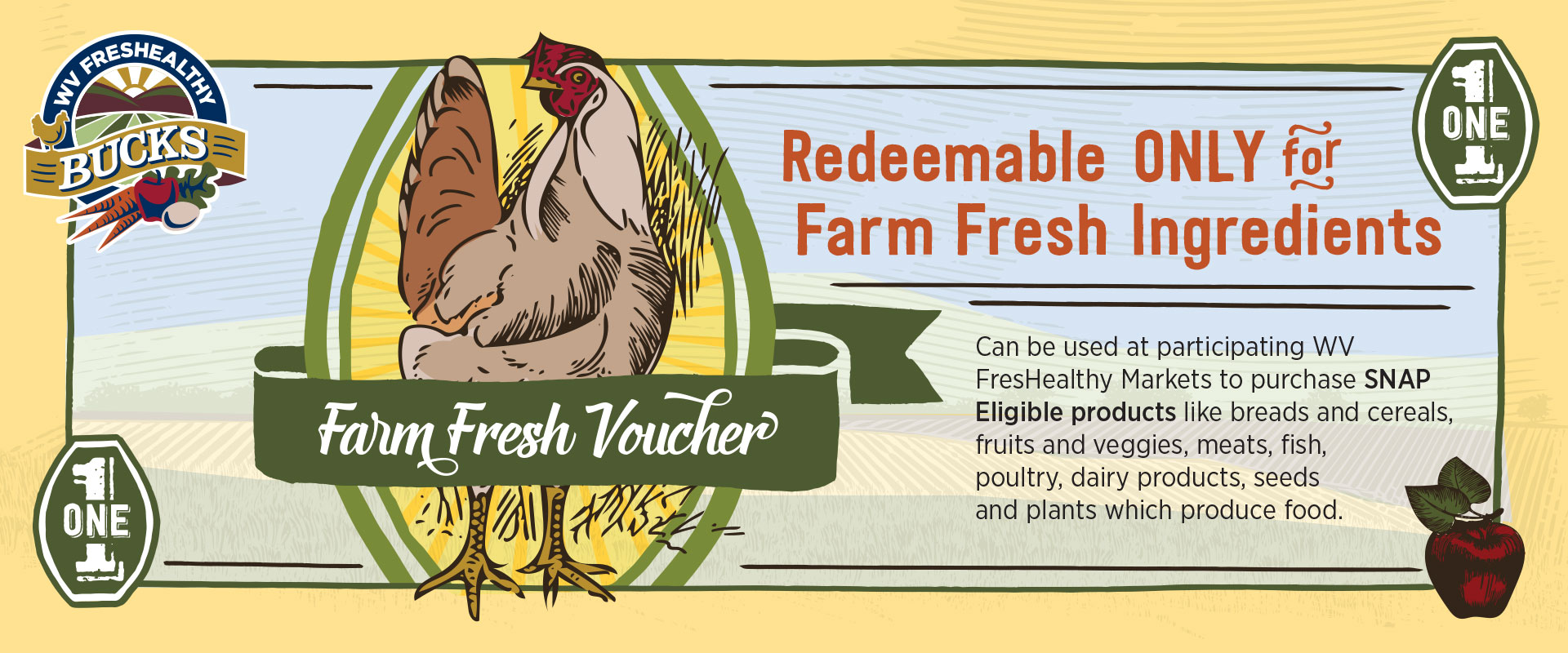
Funny Money!
To operate a SNAP program at your market, you will need an alternate form of currency. The two most widely used forms of alternate currency are paper scrip or a token system.
Paper
Paper Scrip is a simple and efficient alternative currency. Once you have a design, you can work with any local printer to get your scrip printed and ready to be used at market!
You can have your scrip printed on durable paper for longer life so be sure to ask your printer for recommendations.
Tokens
Token systems are widely used at farmers markets throughout the country as an alternative form of currency. You can emboss your token with a stamp unique to your market to make it more difficult to counterfeit.
Printing Money:
We have designed our WV FresHealthy Bucks to be used throughout the state of West Virginia.
Please contact us and we’ll be happy to share resources with your market team
Wood or plastic tokens are readily available from these sites and many others:
https://www.printglobe.com/wooden-nickels-and-plastic-tokens
https://www.imprintitems.com/product/wooden-nickel-1
https://www.ot-wooden-nickel.com/
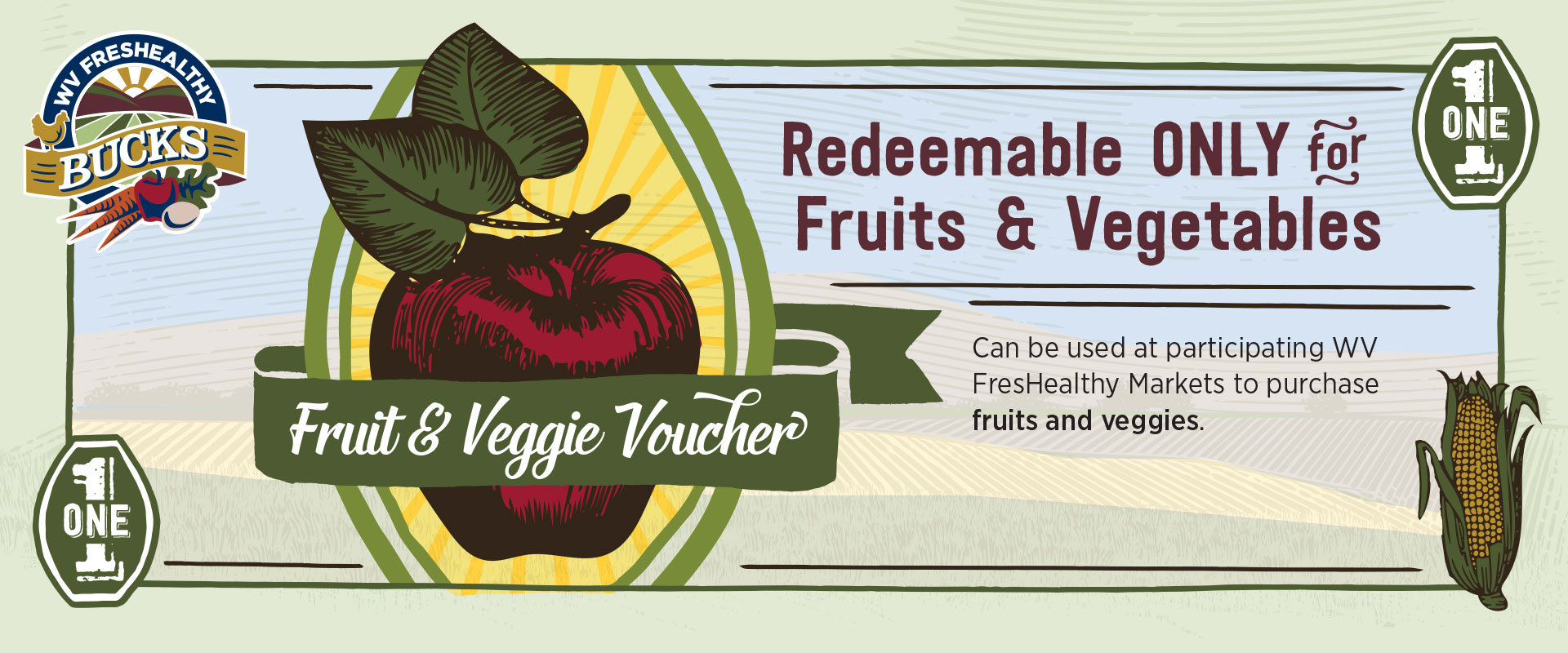
Incentives. How can you use incentives to address your communities health needs?
Yes! We are trying to make people eat more veggies!
In our Eastern Panhandle communities, we use incentives called “fruit and veggie vouchers” to increase the amount of fresh produce our SNAP customers are able to purchase.
This is good news for their bellies and for our vendor’s pockets too!
Millions of American families simply cannot afford produce, relying instead on cheap processed foods.
Doubling SNAP dollars spent at farmers markets levels the playing field so everyone, regardless of income level, can afford fresh, locally grown fruits and vegetables.
What do you need to run an Incentive Program?
1: A Goal
What challenges or issues can an incentive at the market help address in your community?
We’re trying to get folks to spend SNAP dollars on produce instead of empty processed calories.
2: REal Money!
How will you fund the program?
This is where community partners come in handy!
We’ve applied for grants from National, State and Local foundations to create a pool of funds that is used to reimburse our farmers market vendors for produce purchased with incentive bucks.
3: FAke Money
Once you have funding and have determined what kind of … and how much you can offer, you’ll need currency or tokens similar to what is used for SNAP purchases at the market.
This currency should be easily identified as different from your SNAP bucks.
4: Training
Its important to help your volunteers and vendors understand what each currency can be used for.
The SNAP guidelines are pretty specific as to what can and can’t be purchased.
Your incentives are up to you… Ours are a 1 to 1 match to be used to purchase fruits and veggies only.
Here are a few partner ideas to help fund your SNAP Incentive Program
local non-profit hospitals
Non-profit hospitals are required to donate a percentage of their proceeds for community good and SNAP incentives are a perfect fit.
Local community or foundation grants
your community might have a local foundation awarding community grants.
Fundraising through events
healthy community-building activities such as walking and running events can be a powerful fundraiser to help fund your incentive program.
Local donors
your community may have individuals or businesses capable of an annual or one-time gift.
Food Insecurity Nutrition Incentive (FINI)
Look for grants offered through the USDA to help fund your incentive program. Click here to learn more about FINI grants.

Sustainability
Your Community Cannot Afford To Not Do A SNAP Incentive Program
SNAP Incentive Programs–like WV FresHealthy Bucks–continue to grow and are having huge positive impacts for local farmers, farmers markets, and the customers who shop there using SNAP.
The Annual US healthcare tab is 3.5 Trillion dollars. That’s $10,700 per citizen, and it’s going up.
Step 3: Market Day Transactions
HOW DO THE TRANSACTIONS ACTUALLY WORK?
At Your Market Information Booth
1: SAy Hi
At most markets, the customer comes to the information tent. At others, a specific vendor that handles the EBT transactions.
Good signage is key!
Either way, make it easy for SNAP customers to figure out where to go.
2: How Much?
The customer will need to let you know how much SNAP they would like to have turned into market currency.
3: Swipe it!
Or punch the number in, or whatever is easiest with your EBT processing system.
4: The Bucks
Once the transaction goes through…
hand the EBT card back to the customer, give them the matching amount of market SNAP bucks, any incentive bucks, and a receipt.
At the Vendor’s Booth
1: Spending SNAP Bucks
Customers shop for eligible products with their bucks at vendors. Some vendors may have products that are not eligible for SNAP purchase along with eligible items. These should be handled as separate transactions.
2: Making Change
Customers can’t receive cash back for SNAP purchases. They must have the exact amount needed in SNAP currency or pay the difference through other means (cash, credit, debit, etc.)
TIP: Vendors can round up or down or toss in an extra veggie or two to make up the difference.
Things to Things to keep in mind:
Vendor training is necessary. Vendors need to know what is and isn’t eligible to be purchased with SNAP funds.
Also, SNAP participants are entitled to have the value of unused SNAP currency refunded onto their EBT card.
Step 4: Collecting and Reimbursing

Collect and Count:
- At the end of each market, a trusted and trained Market Representative should go around to all vendors to collect and count all SNAP currency.
- Receipts should be issued in duplicate, one for the vendor and one for the market. Be sure to include the date, vendor name, and amount of SNAP currency collected.

Track Your Sales:
- Keep your receipt copies showing amount of SNAP currency collected from each vendor in an orderly fashion. You may even want to create a simple spreadsheet or if you already use an accounting software for your market, you could use that to keep track.
At the end of each market day, using your EBT equipment, print a copy of your “Merchant Totals Report” or “Batch Totals Report” showing the total amount of SNAP currency distributed and/or refunded to customers.

Track Your Sales:
Using the receipts, spreadsheet, and/or accounting software, you will need to reimburse your vendors based on the total SNAP currency collected in exchange for goods.
A monthly reimbursement, from your market to your vendors, in most cases works well
Depending on how often you hold your market, the volume of SNAP transactions, etc. you may want to look at increasing or decreasing the frequency of reimbursement to your vendors
The monies from SNAP transactions go directly into the bank account associated with your EBT equipment so you will already have the funds needed for reimbursement to your vendors.
Our Partners
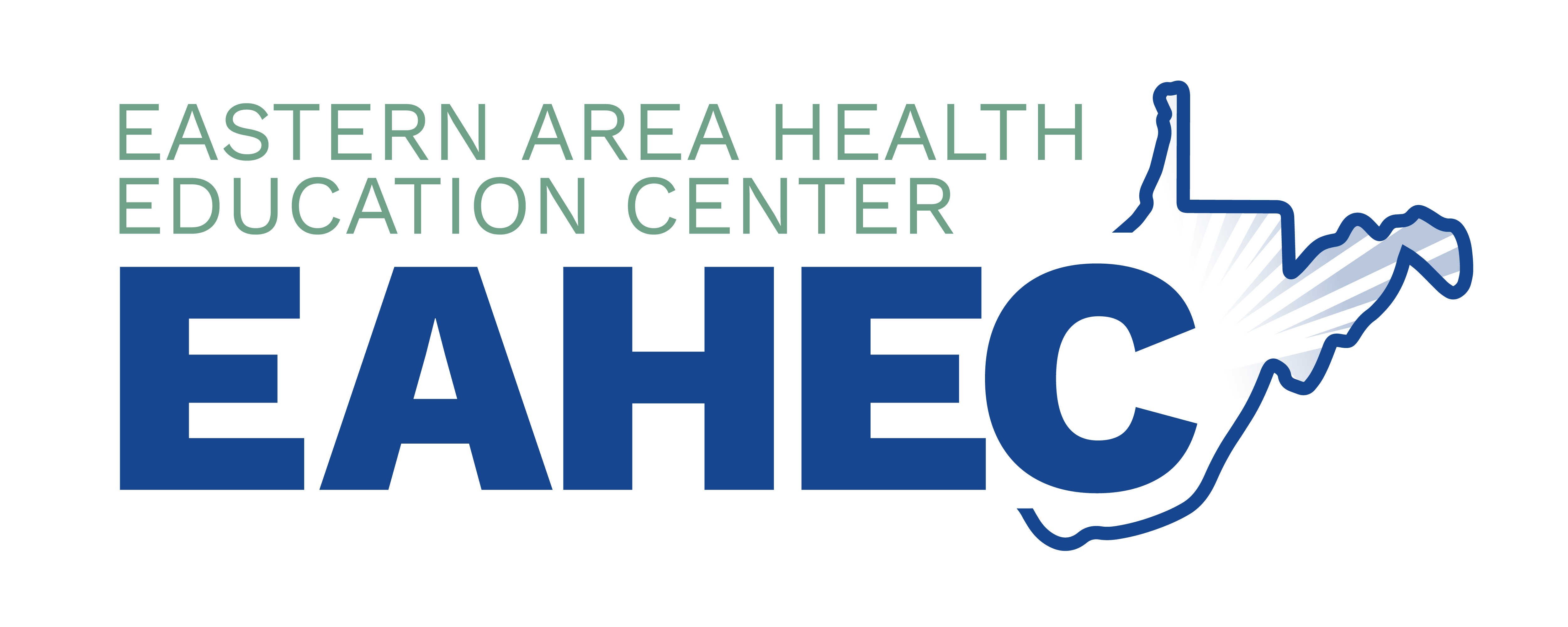

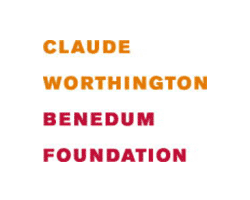

Get in Touch.
Have a question about the program? Want to bring it to your market? Reach out via the form below.
